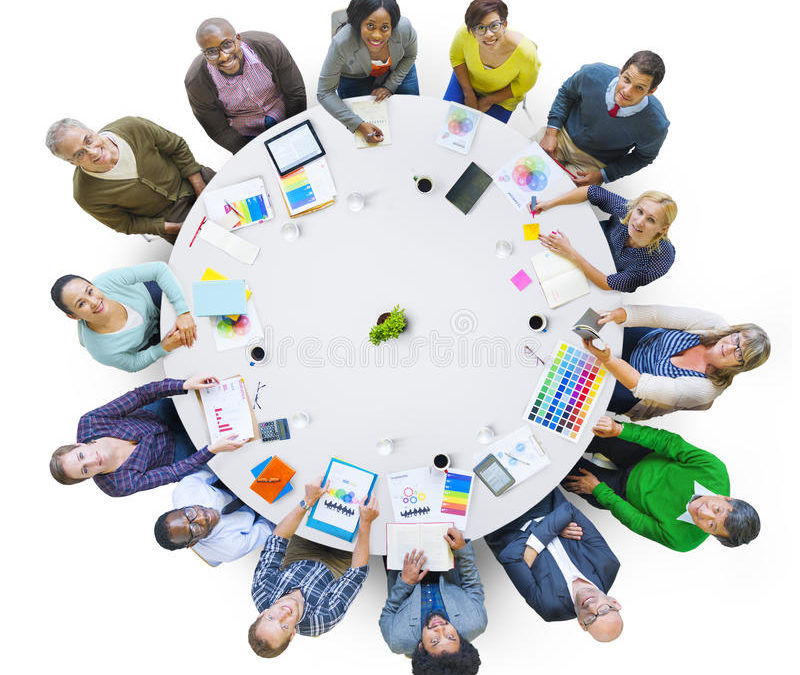
Co-creative Collaboration: What it is & Why It’s Important Now
In a recent blog post a colleague, Runa Bouius, shared the term “co-creative collaboration”. For me it clicked and made so much sense. You may be wondering what the heck does it mean?
To co-create means “to create something jointly”.[1] To collaborate is “to work with another person or group in order to achieve or do something.”[2]
What’s the difference between the two? I believe that by adding “co-creative” to collaboration it underscores the creative aspects of the process and focuses on the positive energy and joy that results from co-creating a new program, project, initiative, organization; and the ownership one feels to the “end product”. It is a great way to bond with a team or group of individuals.
To co-create with a group, there are a number of beliefs that are important to have in place and processes that support co-creative collaboration.
Beliefs that support co-creative collaboration
What I’ve found from my work with people from a variety of cultures and backgrounds is that it is important to believe that the whole is greater than the sum of the parts. In other words, you believe that the chances of creating something new and innovative are much greater when you have variety of different perspectives and “heads” around the table, than what results from your own mind or from a small group who represent similar backgrounds (e.g. disciplines) and/or cultures.
I admire how Barbara Gray[3], a seasoned negotiator and organizational theorist, wrote about collaboration. She likened the collaborative process to a kaleidoscope and the pieces of colored glass within to the various diverse stakeholders involved in such a process. When you turn a kaleidoscope, the image changes, and a new one is created each time. Similarly in a well-designed collaborative process, each stakeholder is enabled to share their ideas and the final “product” the group comes up with is a combination of each person’s unique contribution; yet it is even better as each person builds on the next and the whole becomes greater than the sum of the parts.
Many of us begin our careers believing that we have all the answers, and it is easier to create something on our own rather than to involve others. We don’t really value collaboration until we experience a well-designed co-creative collaborative process.
Processes that support co-creative collaboration
In the late 1980s and early 1990s, I had the opportunity to co-chair a national strategy for the federal government. The consultant we hired to support us through that process was a gifted facilitator, Dorothy Strachan, who taught me so much. The strategy was “Enhancing Prevention in the Practice of Health Professionals” and it involved representatives from 8 national health professional associations in Canada; for example the Canadian Medical Association, Canadian Nursing Association, Canadian Dental Association … . Through a multi-phased process, we created a strategy document that supported integrating prevention through four key issue areas: policy and planning, program and service delivery, education of health professionals, and research and evaluation. The final “product” was endorsed by the Boards of each of the health professional associations who were around the table. It was a landmark document that included a number of concrete actions the various professions could take that included Goals and Options for Action in each of the issue areas, and a dissemination strategy characterized by “Prevention through Partnership: Collaborating for Change”.
Being part of this process made me value collaboration and understand how a well-designed and facilitated process can be both creative and productive.
We didn’t call it “co-creative collaboration” but indeed it was.
To be part of a co-creative collaborative process you need to trust in the process, believe that the whole IS greater than the sum of the parts, ideally include a diverse group of stakeholders in the process, create a safe environment with clear expectations, respect and value the contributions of everyone, and not come to the process invested in a particular outcome, rather be open to possibility. It is helpful to engage a skilled outside neutral facilitator with experience in collaborative processes.
As part of Female Wave of Change Canada, a member-based non-profit whose vision is:
“A more conscious, equitable, just, sustainable and peaceful world where authentic feminine leadership qualities[4] are valued and underpin the creation of new and healthy organizations, structures and systems”,
I invited members to work together to co-create a project related to the Environment. In an email they were told that they didn’t need to be subject matter experts, and it was great if they were; however, having a passion for and interest in co-creating a project in the Environment area was important. Over 3 months of meeting via zoom about every 2 weeks, we co-created what is now called “The Mother Earth Ambassador Program”, an educational program for girls ages 9 to 12 that integrates indigenous wisdom and storytelling. As a group, we identified the: Problems we are solving, the broad Goal, the Outcomes/Objectives, a draft Outline, and Additional Design Aspects. We are now in conversation with a Master’s level university program and their students who we anticipate will assist us in fleshing out the program and “making it real”. If you’re interested in learning more and being part of a co-creative collaborative process, join us at: https://fwoccanada.com.
With the complex issues we are facing today, such as systemic racism, climate change, and gender inequality, we need a variety of “heads around the table” from different backgrounds and cultures to generate creative solutions and move us toward a world that works for everyone. Are you up to the challenge?
[1] https://www.thefreedictionary.com
[2] https://www.merriam-webster.com
[3] Barbara Gray, Collaborating: Finding Common Ground for Multiparty Problems. San Francisco: Jossey-Bass Publishers, 1989.
[4] Feminine Leadership Qualities include: compassionate, creative, collaborative, emotionally intelligent, authentic, inclusive … usually associated with the feminine. That said, men as well as women can have and learn these qualities.